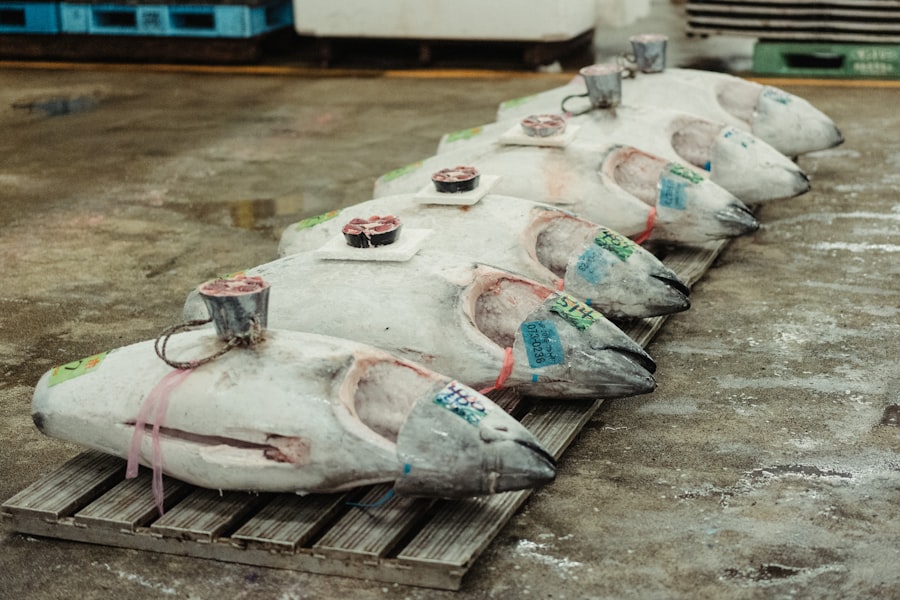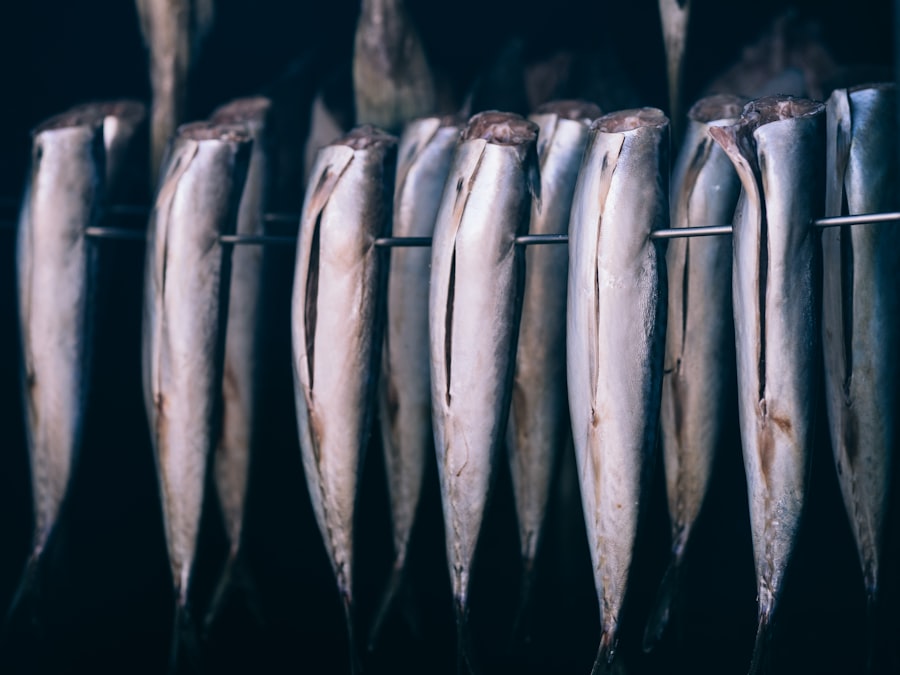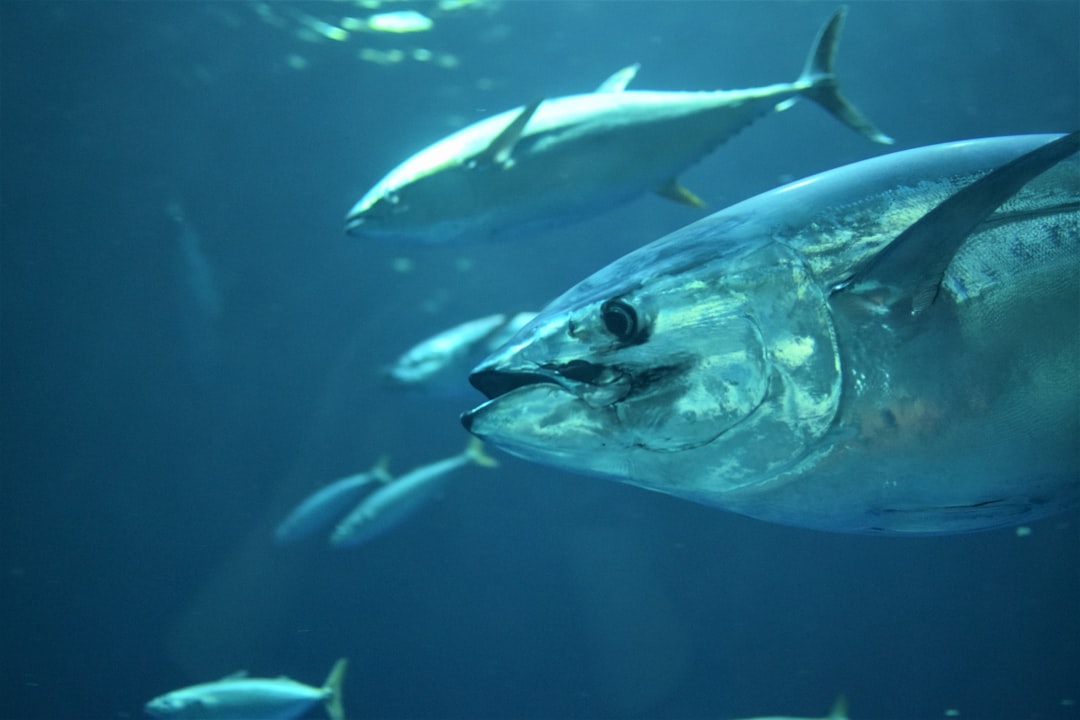Overfishing in the tuna industry has emerged as a significant environmental concern, with far-reaching consequences for marine ecosystems. Tuna species, such as bluefin and yellowfin, are vital components of oceanic food webs, serving as both predators and prey. The relentless pursuit of these fish has led to a dramatic decline in their populations, disrupting the balance of marine life.
As tuna stocks dwindle, the repercussions extend beyond the species itself, affecting the myriad organisms that rely on them for survival. The depletion of tuna not only threatens their existence but also jeopardizes the health of entire marine ecosystems. Moreover, the methods employed in tuna fishing often exacerbate the environmental impact.
Industrial fishing practices, including longlining and purse seining, are notorious for their high catch rates and indiscriminate nature. These techniques not only target tuna but also capture a wide array of non-target species, leading to significant ecological imbalances. The removal of large predatory fish like tuna can trigger cascading effects throughout the food chain, resulting in overpopulation of smaller fish and subsequent declines in other marine species.
Thus, the environmental ramifications of overfishing in the tuna industry are profound and multifaceted, necessitating urgent attention and action.
Key Takeaways
- Overfishing in the tuna industry severely harms marine ecosystems and depletes tuna populations.
- Bycatch causes significant ecological damage, affecting non-target species and biodiversity.
- Economic losses arise from overfishing due to declining tuna stocks and reduced fishery sustainability.
- Government policies and enforcement are crucial but face challenges, especially in international waters.
- Sustainable fishing practices, consumer awareness, and technological monitoring are key to the industry’s future.
The Devastating Effects of Bycatch on Marine Ecosystems
Bycatch, the unintended capture of non-target species during fishing operations, poses a severe threat to marine ecosystems. In the tuna industry, bycatch can include a variety of marine life, such as sharks, sea turtles, and various fish species. The indiscriminate nature of fishing gear used in tuna harvesting means that countless animals are caught and often discarded, leading to significant mortality rates among these non-target species.
This loss not only diminishes biodiversity but also disrupts the intricate relationships that exist within marine ecosystems. The consequences of bycatch extend beyond individual species; they can alter entire ecosystems. For instance, the decline of shark populations due to bycatch can lead to an overabundance of smaller fish species, which may then overgraze on vital habitats like coral reefs.
This imbalance can have cascading effects on marine biodiversity and ecosystem health. Furthermore, the loss of keystone species through bycatch can compromise the resilience of marine environments, making them more vulnerable to other stressors such as climate change and pollution. Addressing bycatch is therefore crucial for maintaining the integrity of marine ecosystems and ensuring their long-term sustainability.
The Economic Consequences of Overfishing in the Tuna Industry

The economic ramifications of overfishing in the tuna industry are profound and multifaceted. As tuna populations decline due to unsustainable fishing practices, the long-term viability of the industry itself is jeopardized. Fishermen who rely on tuna as a primary source of income face diminishing returns as stocks dwindle.
This decline not only affects individual livelihoods but also has broader implications for coastal communities that depend on fishing for their economic stability. The loss of tuna can lead to increased competition among fishermen, driving down prices and further exacerbating economic hardships. Additionally, overfishing can have ripple effects throughout the global seafood market.
As tuna becomes scarcer, prices may initially rise due to increased demand; however, this is often a short-term solution that fails to address the underlying issue of sustainability. Consumers may turn to alternative sources of protein or other fish species, leading to market volatility and uncertainty. Furthermore, countries that heavily depend on tuna exports may experience significant economic downturns if international markets shift away from unsustainable products.
Thus, the economic consequences of overfishing in the tuna industry are not only immediate but also pose long-term challenges for communities and economies reliant on this vital resource.
The Role of Government Policies in Regulating Tuna Fishing
| Policy/Regulation | Region | Year Implemented | Key Metrics | Impact on Tuna Fishing |
|---|---|---|---|---|
| Catch Quotas | Western and Central Pacific Ocean | 2010 | Annual catch limit: 150,000 metric tons | Reduced overfishing, stabilized tuna populations |
| Fishing License Requirements | Indian Ocean | 2015 | License issuance: 500 vessels/year | Improved monitoring and compliance |
| Marine Protected Areas (MPAs) | Atlantic Ocean | 2018 | MPA coverage: 20% of tuna habitats | Enhanced breeding grounds, increased juvenile survival |
| Bycatch Reduction Measures | Global | 2012 | Bycatch reduced by 30% in 5 years | Lowered unintended species mortality |
| Seasonal Fishing Bans | Pacific Ocean | 2016 | Fishing prohibited during spawning season (3 months) | Protected spawning tuna, improved stock regeneration |
Government policies play a crucial role in regulating tuna fishing and addressing the challenges posed by overfishing and bycatch. Effective management strategies are essential for ensuring sustainable fishing practices that protect both tuna populations and marine ecosystems. Many countries have implemented regulations aimed at limiting catch quotas, establishing protected areas, and promoting responsible fishing methods.
These policies are often guided by scientific research and data collection efforts that assess fish stocks and ecosystem health. However, the effectiveness of these regulations can vary significantly across regions and countries. In some cases, enforcement is weak due to limited resources or political will, allowing illegal fishing practices to persist.
Additionally, international cooperation is vital for managing tuna stocks that migrate across national boundaries. Regional fisheries management organizations (RFMOs) have been established to facilitate collaboration among countries; however, their success often hinges on member compliance and commitment to sustainable practices. Strengthening government policies and fostering international cooperation are essential steps toward ensuring the long-term sustainability of tuna fisheries.
The Importance of Sustainable Tuna Fishing Practices
Sustainable tuna fishing practices are paramount for preserving both tuna populations and marine ecosystems. These practices encompass a range of strategies designed to minimize environmental impact while ensuring that fishing remains economically viable for communities dependent on this resource. Techniques such as selective fishing gear, which reduces bycatch, and seasonal closures that allow fish populations to recover are critical components of sustainable management.
Moreover, promoting aquaculture as an alternative source of tuna can alleviate pressure on wild stocks. By cultivating tuna in controlled environments, it is possible to meet consumer demand without further depleting natural populations. Education and awareness campaigns aimed at both fishermen and consumers can also foster a culture of sustainability within the industry.
By prioritizing sustainable practices, stakeholders can work together to ensure that future generations inherit healthy oceans teeming with diverse marine life.
The Impact of Overfishing on Tuna Populations

The impact of overfishing on tuna populations is starkly evident in declining stock assessments across various species. Bluefin tuna, once abundant in the Atlantic Ocean, has seen its numbers plummet due to relentless fishing pressure driven by high market demand. This decline not only threatens the survival of these iconic fish but also raises concerns about genetic diversity within populations.
Reduced genetic diversity can impair a species’ ability to adapt to changing environmental conditions, making them more vulnerable to extinction. Furthermore, overfishing disrupts reproductive cycles and age structures within tuna populations. Younger fish are often targeted before they have had a chance to reproduce, leading to a skewed age distribution that hampers population recovery efforts.
As mature individuals become increasingly rare, the potential for successful breeding diminishes, creating a vicious cycle that exacerbates population declines. Addressing overfishing is therefore critical not only for preserving current stocks but also for ensuring the resilience and adaptability of tuna populations in the face of future challenges.
The Need for Alternative Fishing Methods to Reduce Bycatch
The urgent need for alternative fishing methods to reduce bycatch cannot be overstated in the context of the tuna industry. Traditional fishing techniques often result in significant unintended catches that threaten vulnerable marine species. Innovations in fishing gear design and technology offer promising solutions to mitigate bycatch while still allowing for effective tuna harvesting.
For instance, using circle hooks instead of traditional J-hooks has been shown to reduce sea turtle bycatch significantly while maintaining catch rates for target species. Additionally, implementing time-area closures—restricting fishing activities in specific locations during critical periods—can help protect spawning aggregations and reduce bycatch rates during vulnerable times for non-target species. Fishermen can also adopt practices such as using bird-scaring devices or modifying net designs to minimize incidental catches.
By embracing these alternative methods, stakeholders can work towards a more sustainable future for both tuna fisheries and marine ecosystems.
The Role of Consumer Awareness in Tackling Overfishing in the Tuna Industry
Consumer awareness plays a pivotal role in addressing overfishing within the tuna industry. As consumers become more informed about the environmental impacts of their choices, they can drive demand for sustainably sourced products. Initiatives such as seafood certification programs provide consumers with information about responsible fishing practices and help them make informed decisions when purchasing tuna products.
By choosing sustainably sourced options, consumers can support fisheries that prioritize ecological health and contribute to the recovery of depleted stocks. Moreover, raising awareness about the consequences of overfishing can foster a sense of responsibility among consumers regarding their seafood consumption habits. Educational campaigns highlighting the importance of sustainable fishing practices can encourage individuals to advocate for change within their communities and influence policy decisions at local and national levels.
Ultimately, consumer awareness serves as a powerful tool in promoting sustainability within the tuna industry and ensuring that future generations can enjoy healthy oceans rich in biodiversity.
The Challenges of Enforcing Fishing Regulations in International Waters
Enforcing fishing regulations in international waters presents significant challenges that complicate efforts to combat overfishing in the tuna industry. The vastness of the ocean makes monitoring fishing activities difficult, allowing illegal, unreported, and unregulated (IUU) fishing to thrive in many regions.
Furthermore, international cooperation is essential for managing migratory fish stocks like tuna; however, differing national interests can hinder collaborative efforts. Disparities in enforcement capabilities among countries can create loopholes that undermine collective management strategies. Strengthening international agreements and fostering collaboration among nations are crucial steps toward improving enforcement mechanisms and ensuring sustainable fishing practices on a global scale.
The Role of Technology in Monitoring Tuna Fishing Practices
Technology has emerged as a vital tool in monitoring tuna fishing practices and promoting sustainability within the industry. Advances in satellite tracking systems allow for real-time monitoring of fishing vessels, enabling authorities to detect illegal activities more effectively. These technologies provide valuable data on fishing patterns and stock assessments, informing management decisions aimed at preserving tuna populations.
Additionally, innovations such as electronic monitoring systems equipped with cameras can enhance transparency within fisheries by documenting catch data and bycatch rates accurately. This information is crucial for assessing compliance with regulations and identifying areas where improvements are needed. By harnessing technology’s potential, stakeholders can work towards more effective management strategies that promote sustainable practices while safeguarding marine ecosystems.
The Future of the Tuna Industry: Addressing Overfishing and Bycatch
The future of the tuna industry hinges on addressing the pressing issues of overfishing and bycatch through collaborative efforts among stakeholders at all levels. Sustainable management practices must be prioritized to ensure that tuna populations can recover while supporting coastal communities reliant on this resource for their livelihoods. This requires a commitment from governments, fisheries organizations, consumers, and fishermen alike to embrace responsible practices that prioritize ecological health.
As awareness grows regarding the importance of sustainability within the seafood industry, there is hope for positive change on the horizon. By investing in research, technology, and education initiatives aimed at promoting sustainable practices, stakeholders can work together to create a more resilient future for both tuna fisheries and marine ecosystems worldwide. Ultimately, addressing overfishing and bycatch is not just an environmental imperative; it is essential for securing economic stability and preserving biodiversity for generations to come.
The tuna industry has long been shrouded in controversy, with many consumers unaware of the dark secrets that lie beneath the surface. A related article that delves into these hidden issues can be found at Hey Did You Know This, where it explores the environmental and ethical implications of tuna fishing practices. This eye-opening piece sheds light on the challenges faced by marine ecosystems and the importance of sustainable fishing methods.
WATCH THIS! The $10 Billion Lie: Why Your “Dolphin-Safe” Tuna Isn’t Safe
FAQs
What is the tuna industry’s dark secret?
The tuna industry’s dark secret often refers to unethical practices such as illegal fishing, bycatch of endangered species, human rights abuses including forced labor, and environmental damage caused by unsustainable fishing methods.
How does illegal fishing impact the tuna industry?
Illegal fishing undermines sustainable tuna populations, disrupts marine ecosystems, and causes economic losses for legal fishers. It also contributes to overfishing, threatening the long-term viability of tuna stocks.
What are the environmental concerns associated with tuna fishing?
Environmental concerns include overfishing, bycatch of non-target species like sharks and dolphins, habitat destruction, and the use of fishing methods that harm marine biodiversity.
Are there human rights issues linked to tuna fishing?
Yes, reports have documented forced labor, human trafficking, and poor working conditions on some tuna fishing vessels, particularly in certain regions of the world.
What measures are being taken to address these issues?
Efforts include international regulations, certification programs like the Marine Stewardship Council (MSC), improved monitoring and enforcement, and campaigns promoting sustainable and ethical tuna sourcing.
How can consumers help combat the tuna industry’s dark secret?
Consumers can choose sustainably sourced tuna products, support brands with transparent supply chains, and advocate for stronger regulations and enforcement against illegal and unethical fishing practices.
Is all tuna fishing harmful to the environment?
Not all tuna fishing is harmful; sustainable fishing practices and responsible management can minimize environmental impact and help maintain healthy tuna populations.
What role do governments play in regulating the tuna industry?
Governments establish fishing quotas, enforce laws against illegal fishing, participate in international agreements, and support conservation efforts to ensure sustainable tuna fisheries.
